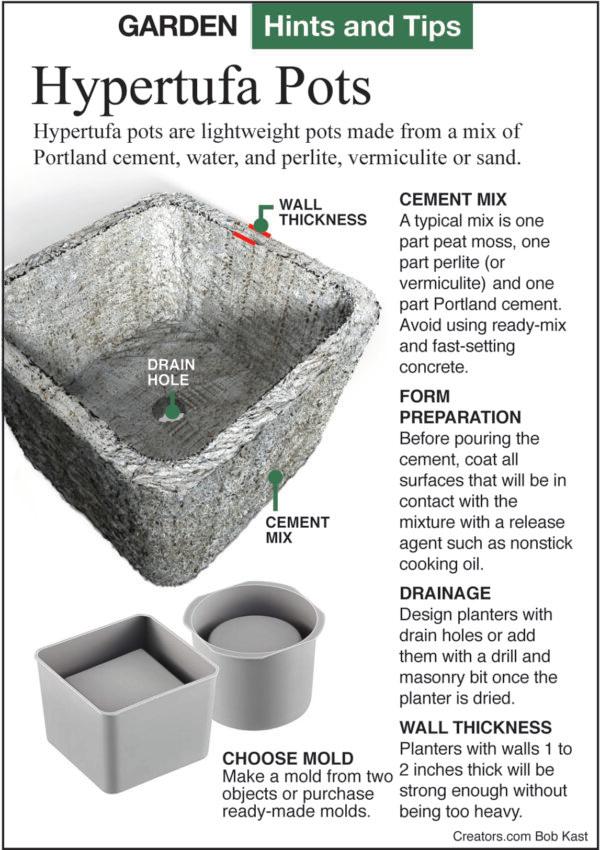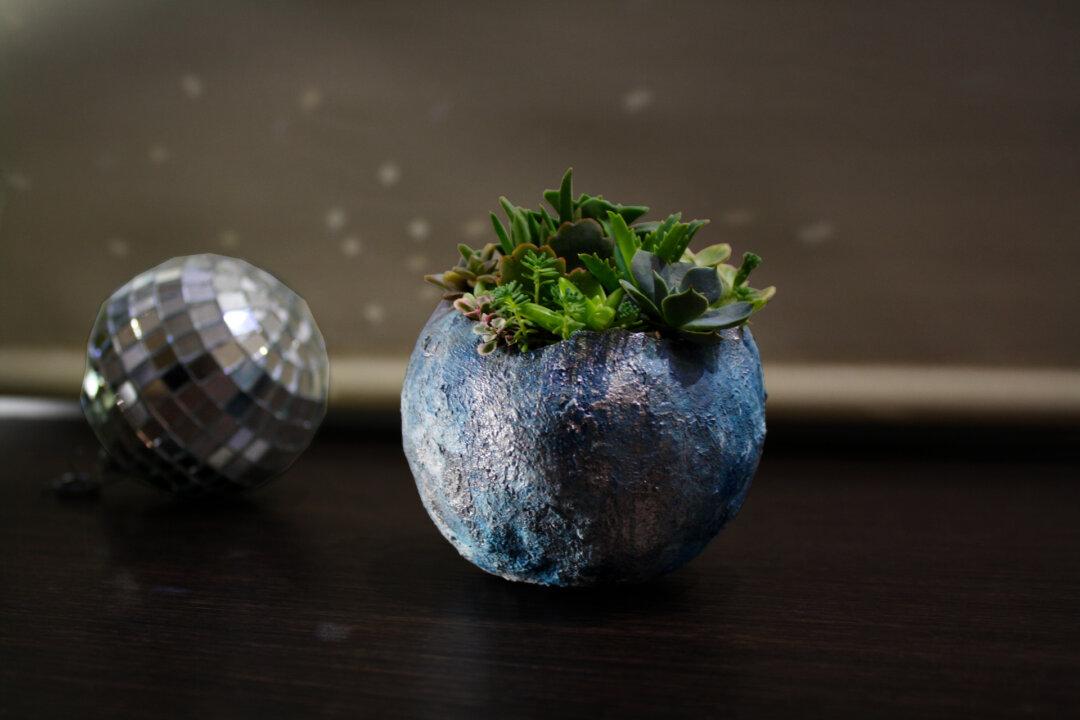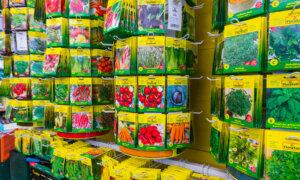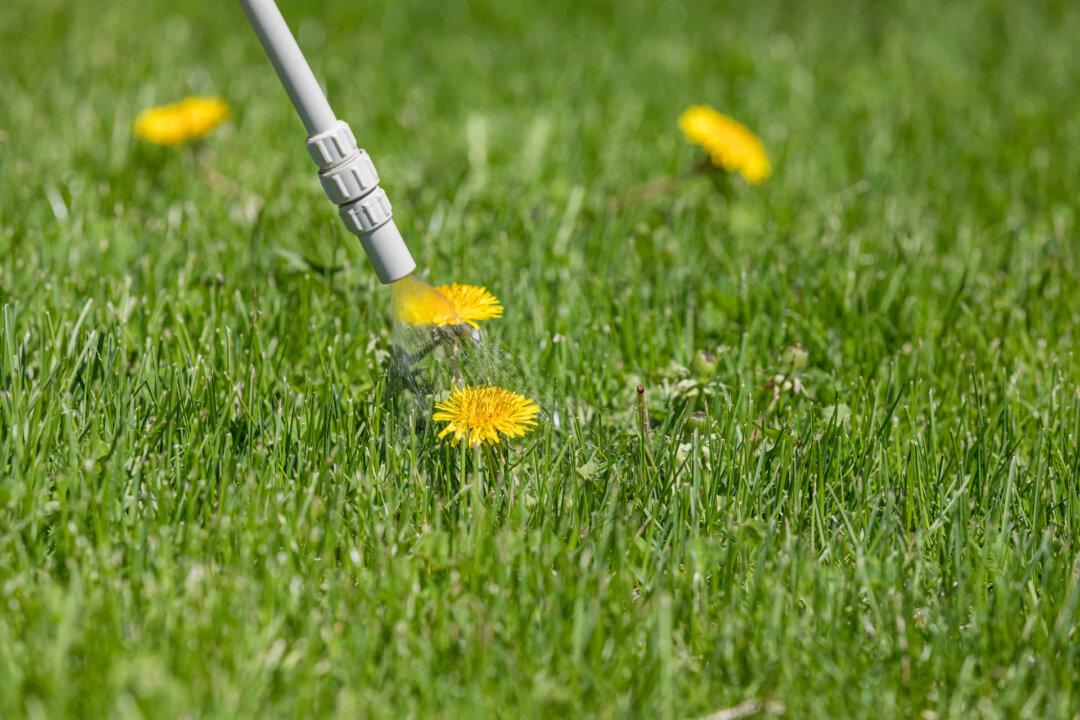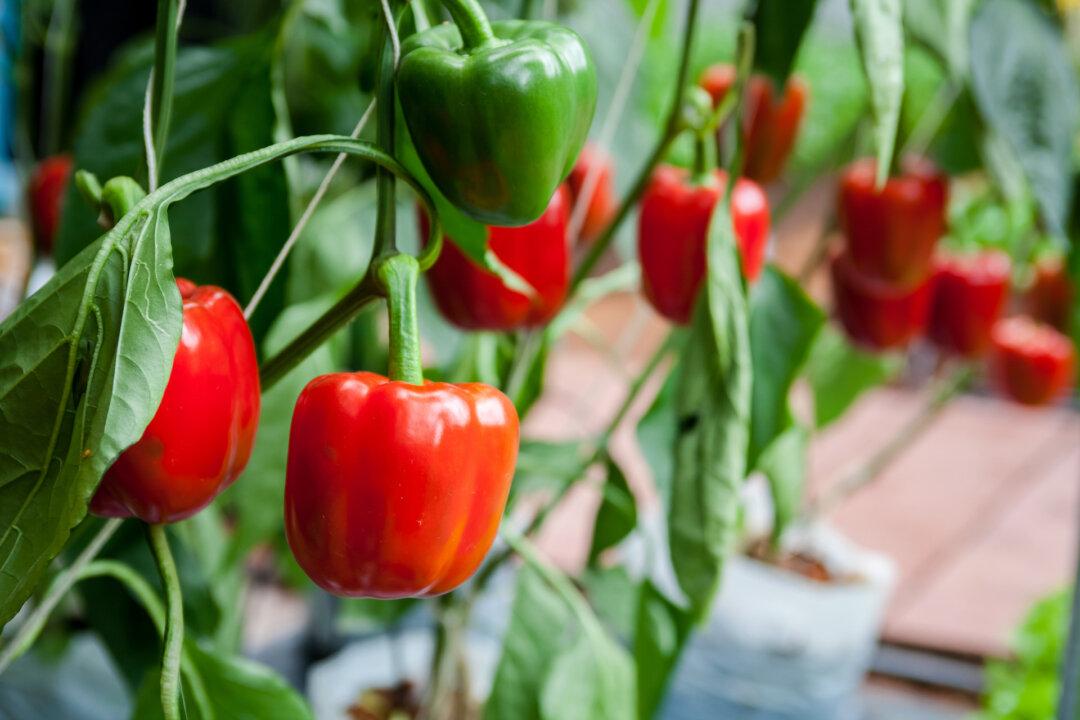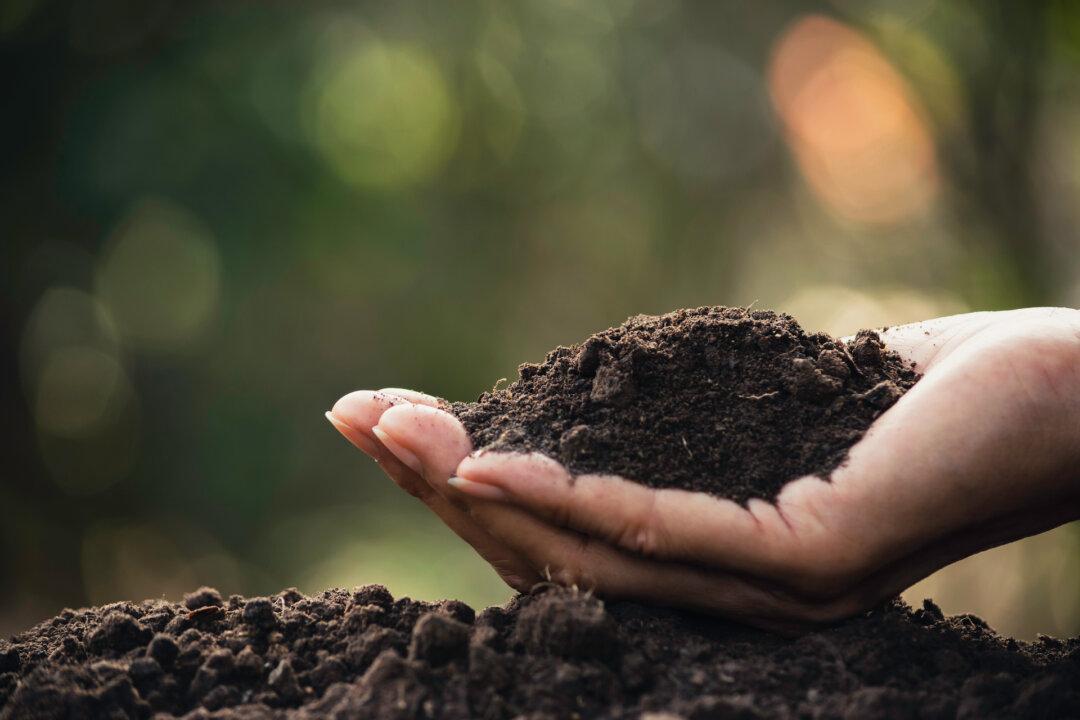Hypertufa is a human-made version that uses one part Portland cement to three parts of other materials, such as perlite, vermiculite, or sand. One of the materials used is sphagnum peat moss. A typical recipe is equal parts type 1 Portland cement, peat moss, and perlite. Each part is measured by volume, not weight, so three buckets to three buckets, and not three pounds to three pounds.
Portland cement is available at your local hardware store. They will also have bags of fiberglass or polymer fibers and liquid acrylic that are used to strengthen the mix. Follow the directions, but be careful to not add too much acrylic without adjusting how much water is added to the mix. You can also get coloring in liquid or dry bags from the grout and tile section of the store, so you can color the planter to match the patio or to look like natural stone.
You will not be limited to creating a planter. You can make balls, faces, plaques, wall stones, fountains, and just about any other shape you can think of. Leaves, plastic butterflies and dragonflies, tiles, and other objects can be placed into molds to create interesting relief on the sides of the mold.
Simple flat tabletops, benches, and steppingstones just need a wooden frame for the sides and a smooth bottom that will become the top when finished. Flat pieces should be at least 2 inches thick with a wire mesh placed in the middle, but wire reinforcing is usually not used for planters, even if you don’t use the fiber products for added strength.
Planters are made using two molds. The outer mold forms the outside of the planter. The inner mold needs to be small enough to leave a 3/4-inch gap for small planters under a foot tall and as much as a 2-inch space all the way around for large outdoor planting troughs. Large planters can be made with wooden boxes, and small ones can be made using two metal bowls.
Before filling the molds with concrete, spray them with a mold release product for easier removal. It is available from the same place as the cement. Place short pieces of tubing, such as a 2-inch-long piece of garden hose, in the bottom of the mold to form a drainage hole. Hypertufa is porous, but a drain hole will still help. Pour the concrete into the bottom of the mold and then place the inner mold in its place, being sure to center it. Then fill the space between the two molds. Tap the molds gently for a few minutes to make sure the concrete mix has settled and there are no large air pockets between the molds.
Let the mix cure for a couple of days before trying to remove the inner mold. Once it is out, let the mix sit for another day before removing the outer mold. Spray it with water, wrap it in plastic, and let it sit for a couple of weeks. Check it to see if the mixture is hard enough to use. It may need to cure for as long as two months to become really hard. During the curing process, you can file down rough edges and scratch it with a trowel for stress marks.
Hypertufa planters have very good drainage. They are especially good for plants that require good drainage, including succulents such as jade plants, sedums, alpine garden plants, and many cacti.
